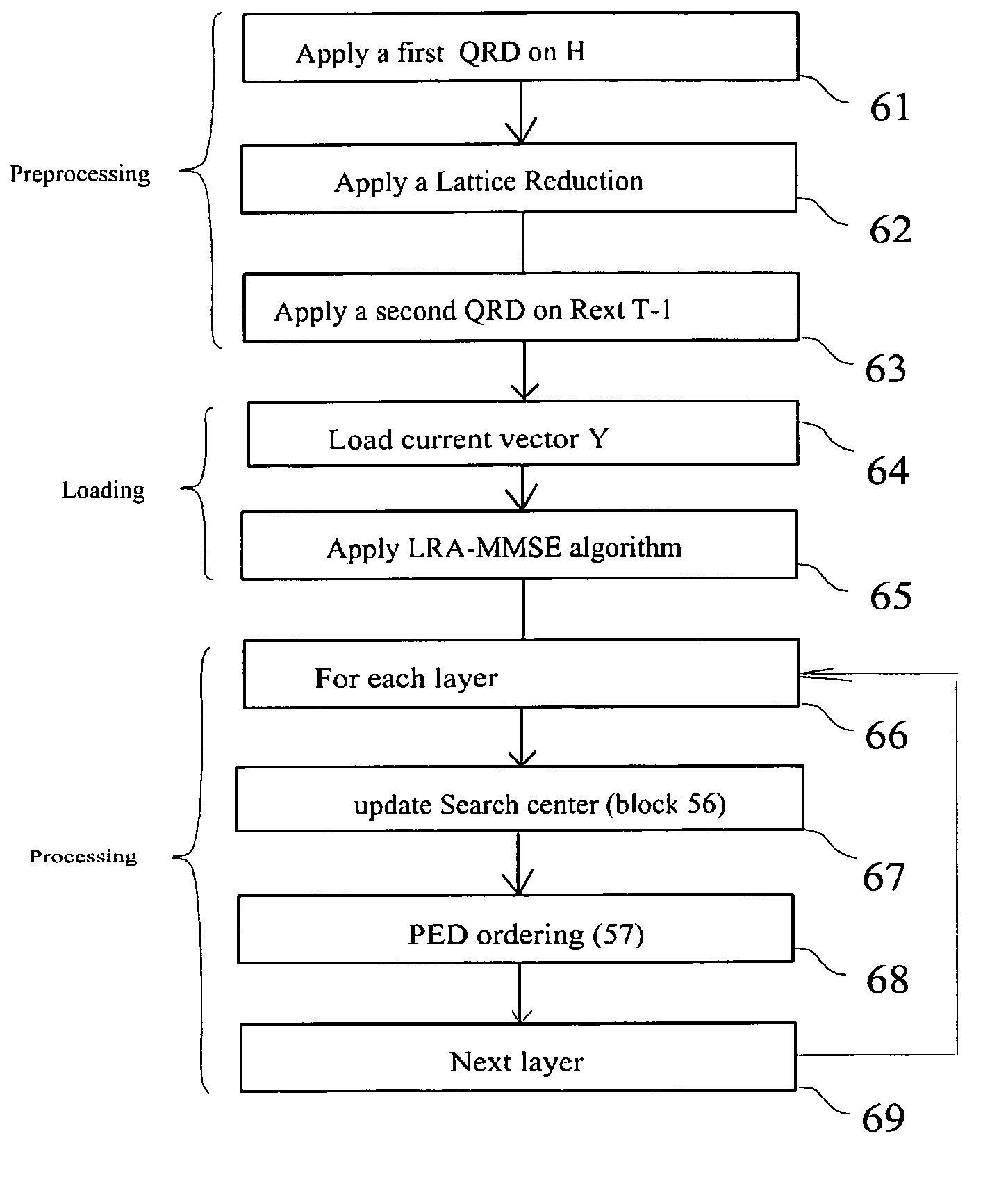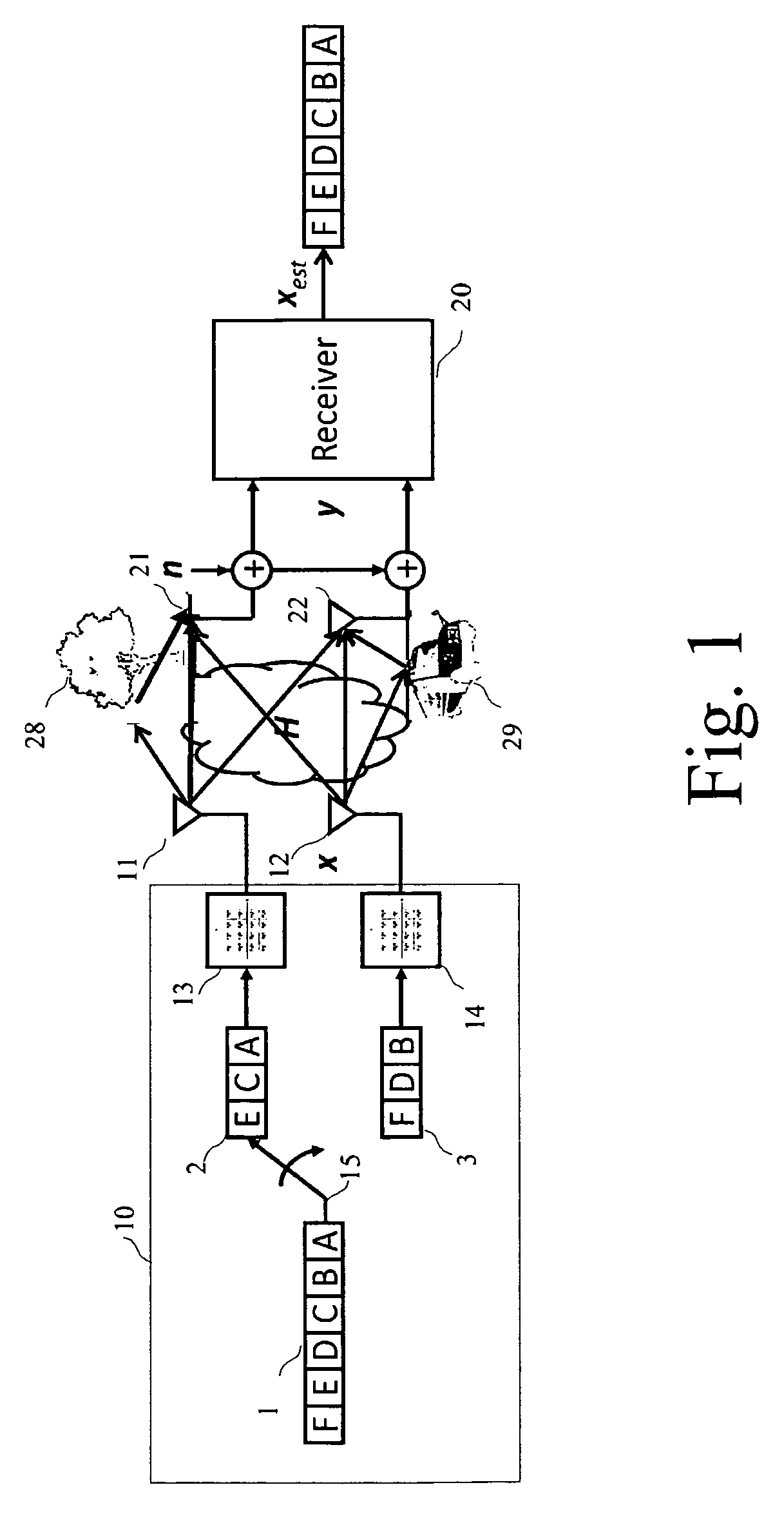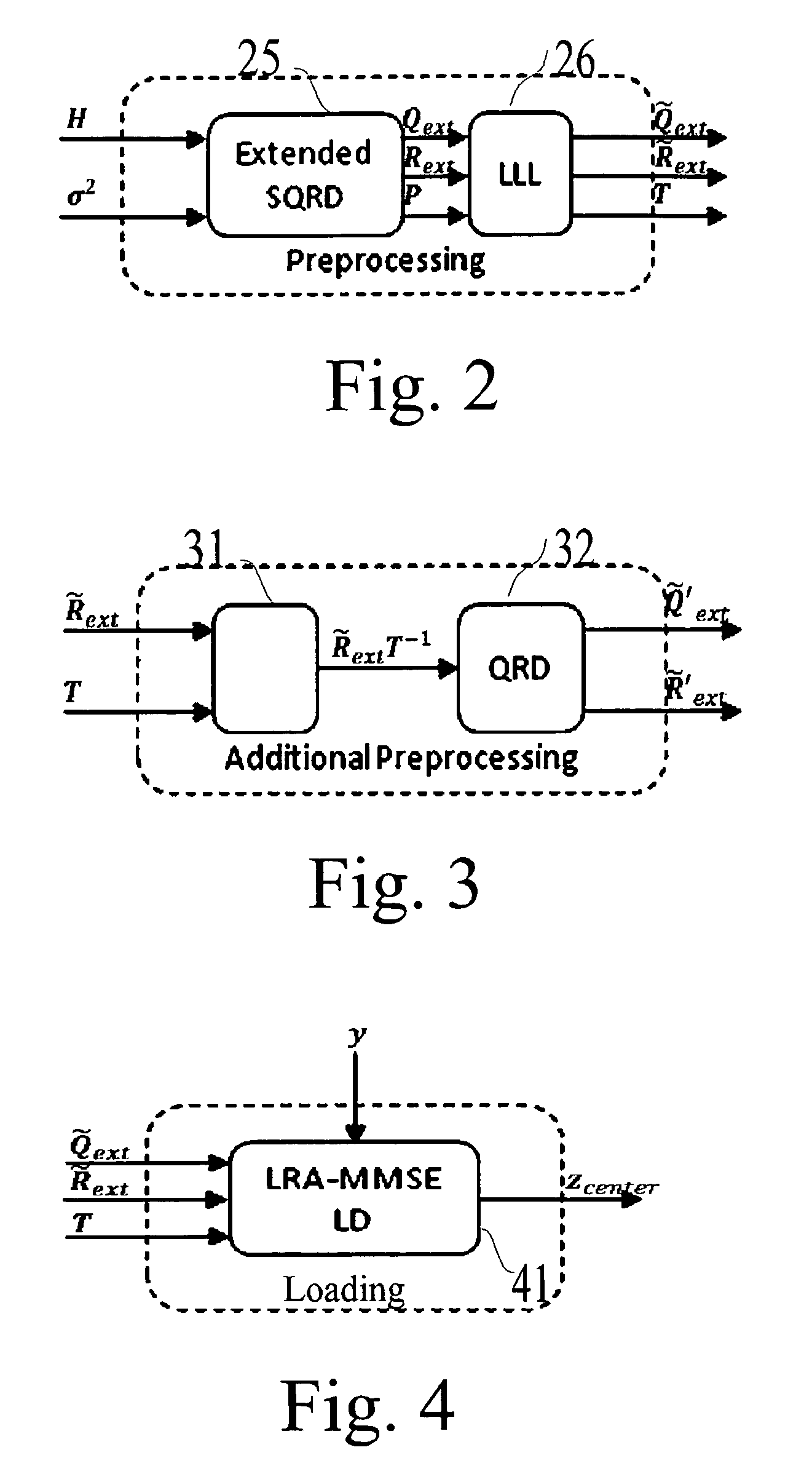MIMO receiver using lattic reduction and K-Best detection
a receiver and lattic reduction technology, applied in the field of wireless communication, can solve the problems of loss of performance, suboptimal detector, and many implementation problems, and achieve the effect of powerful near-ml detection
- Summary
- Abstract
- Description
- Claims
- Application Information
AI Technical Summary
Benefits of technology
Problems solved by technology
Method used
Image
Examples
first embodiment
1) First Embodiment
[0113]One will now describe with respect to FIG. 9 one first embodiment of a process for carrying out a detection in the Original Domain Neighborhood (ODN), based on a Lattice Reduction aided (LRA) MMSE detection, involving the different functional blocks of FIGS. 2-8.
[0114]As described above, the particular embodiment successively involves a preprocessing phase (A)—only depending on the channel —, then followed by an loading phase (B) for processing the received observations and then completed by a phase of neighborhood search (C) within the Original Domain Neighborhood (ODN) for the purpose of achieving the detection.
A. Preprocessing
[0115]The preprocessing phase starts with the assumption of the knowledge of the channel H which can be determined by any conventional means, such as for instance by the use of pilot or reference signals.
[0116]Also, it is assumed that the variance of the noise (σ2) is known.
[0117]Such parameters may be determined, for instance, after...
second embodiment
2) Second Embodiment
[0146]With respect to FIG. 10, there will now be described how the two RDN and ODN mechanisms can be combined for the purpose of achieving a highly effective detection process which takes into account the level of resources available in the receiver.
[0147]A. Preprocessing Phase
[0148]The process starts with a step 71 consisting in the first QRD decomposition which was described in reference to step 61 of FIG. 9, yielding the three parameters: Qext, Rext, and P.
[0149]Then, in a step 72, the process applies, similarly to the step 62, a lattice reduction in order to generate the following matrices {tilde over (Q)}ext, {tilde over (R)}ext, T and T−1 with T being a transformation matrix which takes into account the permutations already accounted with matrix P, plus the additional changes resulting from the lattice reduction.
[0150]Then a test is performed in a step 73 for the purpose of determining whether the level of digital resources is superior to a predetermined le...
PUM
 Login to View More
Login to View More Abstract
Description
Claims
Application Information
 Login to View More
Login to View More - R&D
- Intellectual Property
- Life Sciences
- Materials
- Tech Scout
- Unparalleled Data Quality
- Higher Quality Content
- 60% Fewer Hallucinations
Browse by: Latest US Patents, China's latest patents, Technical Efficacy Thesaurus, Application Domain, Technology Topic, Popular Technical Reports.
© 2025 PatSnap. All rights reserved.Legal|Privacy policy|Modern Slavery Act Transparency Statement|Sitemap|About US| Contact US: help@patsnap.com



